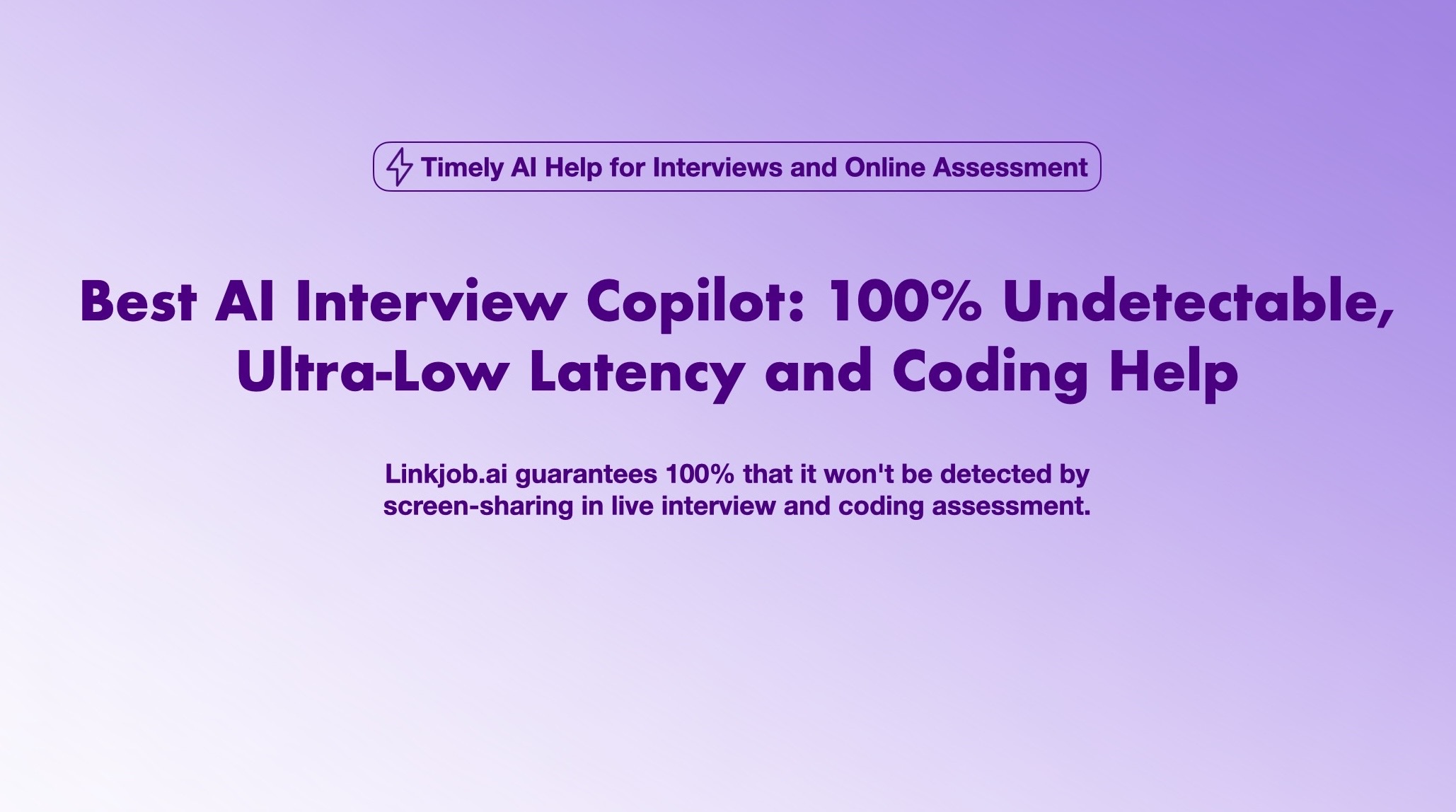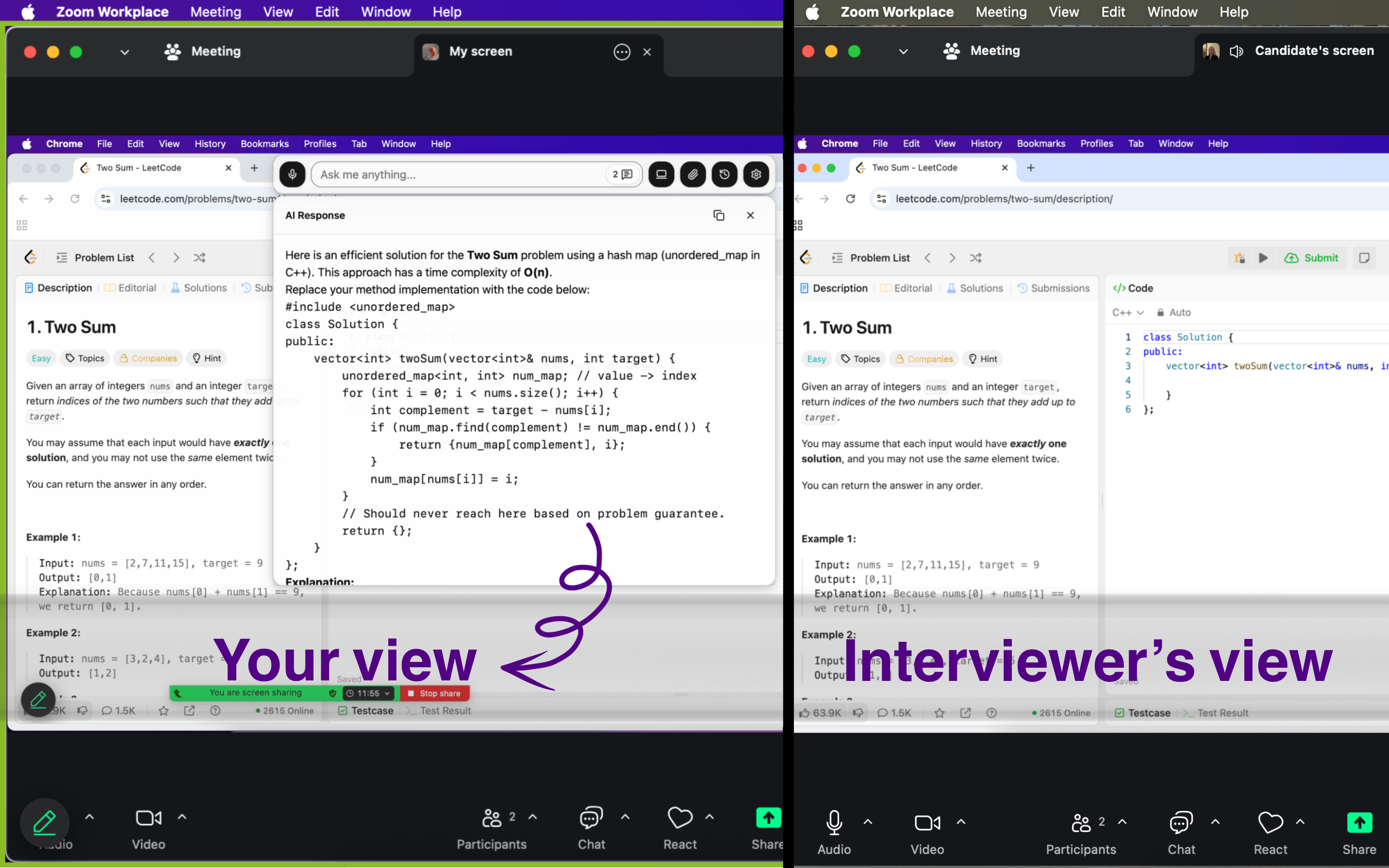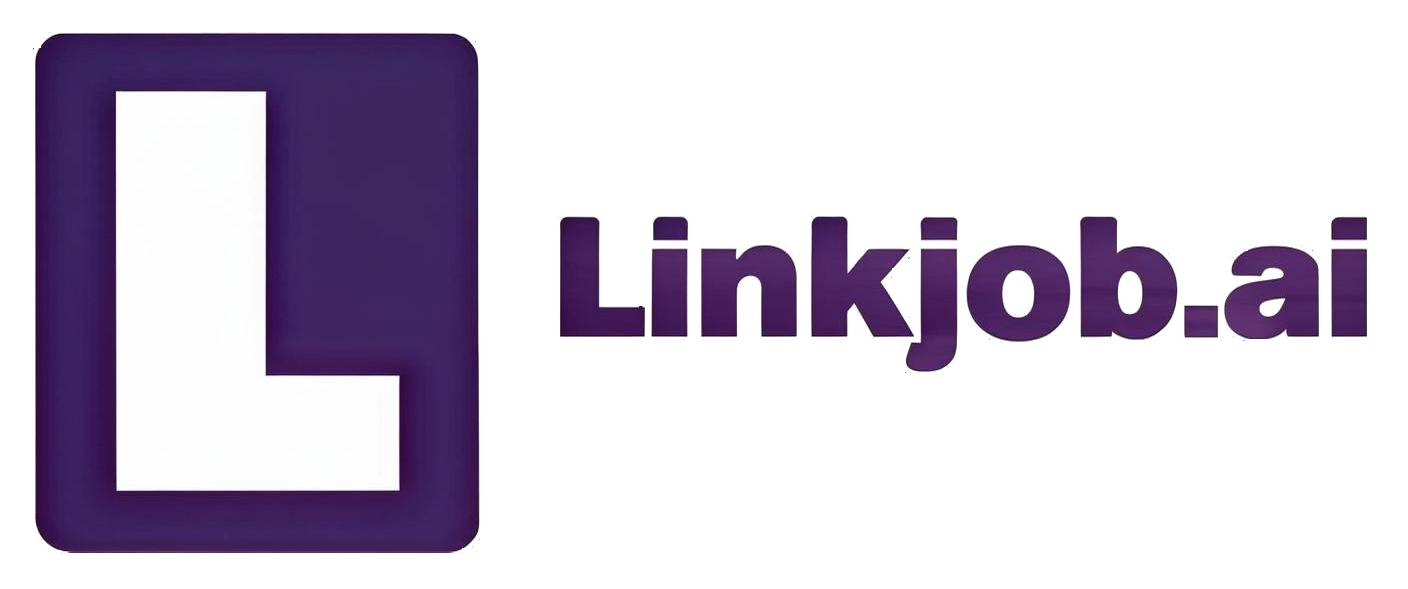My Top 20 Challenging Selenium Interview Questions for Experienced Pros

I know how tough it can be to face selenium interview questions for experienced roles. Many times, I struggled with handle dynamic elements in selenium that kept changing, or tests that failed just because a page loaded a bit slow. Keeping scripts updated after every UI change felt never-ending. Sometimes, deep technical questions or vague interviewer language made me lose focus. I found that using AI-powered tools for mock interviews and real-time tips helped me stay sharp and confident when it mattered most.
I have to say, Linkjob.ai is really incredibly useful. During the interview process, it's completely invisible—even if the interviewer requires screen sharing, the other party can't see at all that I'm using AI.
Why These Questions Matter
Industry Trends
I have seen the world of test automation change fast. Companies now want more than just basic Selenium skills. They look for people who can handle complex web apps, work with cloud tools, and keep up with new frameworks. In 2025, many teams use CI/CD pipelines, Docker containers, and cloud-based test grids. Automation is not just about clicking buttons anymore. It is about building smart, reliable tests that work everywhere. If you want to stand out, you need to show you can solve real-world problems and adapt to new tech.
Interviewer Expectations
Interviewers expect a lot from experienced Selenium professionals. They want to see if you can:
Handle dynamic web elements and tricky UI parts like canvas or tables.
Make tests run faster and fix flaky tests with retry logic.
Connect Selenium with CI/CD tools like Jenkins and Docker.
Use BDD frameworks such as Cucumber and write clear feature files.
Manage browser crashes and restart sessions when needed.
Use new Selenium features like Selenium Manager for driver management.
Write clean, maintainable scripts using patterns like Page Object Model.
Tackle advanced cases like multi-language testing or performance checks.
Work with frameworks like TestNG or JUnit and run tests in parallel.
Build data-driven and cross-browser testing strategies.
These skills show you can handle tough challenges and design strong automation frameworks.

Common Pain Points
I remember feeling nervous before interviews. Sometimes, I did not get feedback, so I did not know if my answers were good. When interviewers asked unexpected questions, I froze. Many people struggle with these same issues. It is easy to lose confidence if you cannot practice real scenarios or get instant tips. That is why I started using AI tools that give real-time feedback and help me practice under pressure. If you want to master selenium interview questions for experienced roles, you need to tackle these pain points head-on and find ways to improve every day.
Selenium Interview Questions for Experienced
WebDriver Architecture
When interviewers ask about WebDriver architecture, I always explain how Selenium WebDriver talks directly to browsers using browser drivers, without needing a server in between. This makes tests faster and more reliable. I mention the main parts: the WebDriver API, browser drivers (like ChromeDriver), and the browsers themselves. I also talk about how commands flow from my test code to the browser driver, then to the browser.
Interviewers want to see if I can troubleshoot issues, handle dynamic elements, and integrate tests with CI pipelines. They often ask about parallel execution using Selenium Grid and how to debug failing tests.
This question is tough because it covers both theory and real-world troubleshooting.
Key points I cover:
Direct communication improves speed and reliability.
Decoupling test code from browsers allows flexibility.
Handling cross-browser compatibility and parallel execution is essential.
Browser Compatibility
Browser compatibility issues can break even the best automation frameworks. I’ve faced problems where a test passed in Chrome but failed in Firefox after a browser update. These issues increase maintenance and force me to update locators or scripts often.
In real projects, I use cloud platforms like BrowserStack to run tests on different browsers and devices. This helps me catch compatibility bugs early and scale my tests.
Interviewers want to know if I can manage these challenges and keep tests stable across browsers.
I always mention:
Using cloud-based platforms for real browser/device coverage.
Updating scripts and locators to handle browser-specific quirks.
Integrating with CI/CD for faster feedback and reporting.
Selenium Versions
I often get asked about the differences between Selenium 3 and Selenium 4. Here’s a quick comparison table I use:
Feature/Aspect | Selenium 3 | Selenium 4 |
|---|---|---|
Protocol | JSON Wire Protocol | W3C WebDriver Protocol |
Driver Management | Manual setup | Selenium Manager automates driver management |
Grid Architecture | Manual hub/node setup | Native Docker/Kubernetes support, scalable Grid |
IDE | Basic features | Enhanced IDE, better recording/debugging |
Window/Tab Management | Manual handling | New Window API for easier switching |
New APIs | Limited | Relative locators, Chrome DevTools integration |
Browser Support | Older browsers | Modern browsers, Chromium-based |
Actions API | Basic | More precise and flexible |
Logging/Tracing | Limited | Improved for debugging |
Interviewers want to see if I keep up with new features and can explain how these changes impact real projects.
This question is challenging because it tests both my technical knowledge and my ability to adapt to new tools.

Driver Management
Managing browser drivers in large test suites can be a headache. I pin driver versions to specific browser versions to avoid sudden failures. I use Selenium Grid with Docker or Kubernetes for scalable infrastructure.
I integrate driver management with CI/CD pipelines so updates happen automatically.
I also use headless browsers to save resources and keep a central place for logs and driver binaries.
Interviewers look for:
Parameterized WebDriver setups for flexibility.
Regular driver upgrades behind feature flags.
Choosing between cloud and on-premise Grids based on security needs.
Page Object Model
The Page Object Model (POM) changed how I write and maintain tests. I create a class for each web page, putting all the locators and actions there. When the UI changes, I only update the page class, not every test.
POM makes my code cleaner, more readable, and easier to scale.
Interviewers want to know if I use POM to separate test logic from UI details and if I follow best practices like descriptive method names and modular design.
Why it’s challenging:
It requires discipline to keep business logic out of page classes.
I need to update only the affected page object when the UI changes.
Dynamic Elements
Handling dynamic selenium elements is one of the most common selenium interview questions for experienced professionals. I use dynamic XPath functions like contains() or CSS selectors with wildcards to find elements with changing attributes.
I rely on explicit waits (like WebDriverWait) to handle elements loaded by AJAX or JavaScript.
If I get a StaleElementReferenceException, I re-locate the element or retry the action.
My best practices:
Use flexible locators (XPath, CSS).
Apply explicit waits, not hardcoded sleeps.
Use JavaScript Executor for tricky elements.
Organize locators with POM for maintainability.
Parallel Execution
Running tests in parallel saves time but brings new challenges. I use Selenium Grid to distribute tests across machines and browsers. Docker helps me isolate environments.
I make sure each test has its own WebDriver instance using ThreadLocal, and I avoid shared variables to prevent flaky tests.
Interviewers want to see if I can manage race conditions, flaky tests, and infrastructure bottlenecks.
Tips I share:
Clean up resources after each test.
Use thread-safe reporting tools.
Prioritize and optimize test cases for parallel runs.
Custom Waits
Custom waits make my tests more reliable, especially in complex apps. I write waits that check for specific conditions, like element visibility or AJAX completion.
This reduces flaky failures from timing issues and keeps my tests in sync with the app.
Interviewers want to know if I can create waits that reflect real user interactions and handle unpredictable delays.
I often use:
Polling with increasing intervals.
Application-aware waits (e.g., waiting for Angular HTTP requests to finish).
File Uploads
Automating file uploads can be tricky. The most reliable way is using sendKeys() on <input type='file'> elements. If the input is hidden or uses a custom UI, I combine Selenium with Java’s Robot class or AutoIt to handle native OS dialogs.
WebElement uploadFile = driver.findElement(By.cssSelector("input[type='file']"));
uploadFile.sendKeys("C:/Users/Me/Desktop/testfile.jpg");
Interviewers want to see if I can handle both browser and OS-level interactions for uploads.
Testing on real devices and browsers ensures my solution works everywhere.
Authentication Handling
Authentication, especially with MFA, is a hot topic. I automate login by finding the username and password fields, entering credentials, and submitting the form to handle browser authentication. For MFA, I use test accounts with MFA disabled or mock the service in test environments. Sometimes, I fetch OTPs from email using scripts.
Step | Description |
|---|---|
Navigate to Login | Open login URL with Selenium |
Locate Fields | Find username/password inputs |
Enter Credentials | Send keys to input fields |
Submit Form | Click login button |
Verify Success | Check for page title or success message |
Interviewers want to know if I can handle secure logins without hardcoding sensitive data and if I follow security best practices.
Framework Components
A robust selenium automation framework has several key parts. I always mention:
Component | Description | Why It Matters |
|---|---|---|
Selenium WebDriver | Core API for browser automation | Fast, reliable, flexible |
Selenium Grid | Parallel test execution across browsers/environments | Reduces execution time |
Data Driven Framework | Separates test data from scripts | Easier maintenance, scalability |
Keyword Driven Framework | Uses keywords for modular, reusable tests | Collaboration, maintainability |
Hybrid Framework | Combines data and keyword driven approaches | Flexibility, robustness |
Modular Based Framework | Divides app into modules for separate testing | Reusability, easier maintenance |
BDD | Uses plain language for test cases (e.g., Gherkin) | Aligns with business requirements |
Interviewers want to see if I can design frameworks that scale and support enterprise needs.
BDD Integration
Behavior Driven Development (BDD) helps teams work together. I write feature files in plain English (Gherkin), so everyone understands the tests.
I join ‘Three Amigos’ workshops with business analysts and developers to turn user stories into testable scenarios.
I use Cucumber to link feature files to Selenium code, making step libraries reusable.
Why it matters:
Improves communication and shared understanding.
Increases test coverage and reduces duplication.
Enables automated execution and fast feedback in CI/CD.
Test Data
Managing test data is a big part of selenium interview questions for experienced professionals. I protect sensitive data by masking or anonymizing it. I generate synthetic data for realistic tests and use sampling to keep datasets small but relevant.
I automate test data access and integrate management tools with CI/CD pipelines.
I also keep data versioned and backed up for consistency.
My strategies:
Regularly refresh test data.
Use centralized tools for scalable, automated handling.
Script Maintainability
Long-term maintainability is key for large projects. I use consistent naming conventions and the Page Object Model to reduce duplication.
I prefer explicit waits over Thread.sleep() and capture screenshots on failures for easier debugging.
I keep a clear directory structure and use proper logging and reporting tools.
Interviewers look for:
Well-organized codebase.
Prioritized test cases.
Comprehensive planning from the user’s perspective.
Reporting
Reporting is more advanced now than ever. I use tools like TestNG Reporter Log, JUnit, Extent Reports, Allure, and Test Evolve Halo. Here’s a quick table:
Tool | Features & Benefits | Use Cases |
|---|---|---|
TestNG Reporter Log | HTML reports, parallel execution, easy integration | Java + Selenium, CI/CD |
JUnit | HTML/console reports, defect tracking | Lightweight builds, Java environments |
Extent Reports | Screenshots, interactive visual reports | Detailed reporting, stakeholder updates |
Allure | Multi-language, graphs, timelines, customizable | Collaboration, issue resolution |
Test Evolve Halo | Cloud dashboards, JIRA integration, real-time insights | Unified reporting, CI/CD pipelines |
I always integrate reporting with CI/CD and use dashboards for real-time insights.
CI/CD Integration
Integrating Selenium with CI/CD pipelines changed how I deliver software. I configure tests to run automatically on code commits, using frameworks like JUnit or TestNG.
I define pipeline scripts to include Selenium tests after builds, and I use Selenium Grid for parallel execution.
I monitor results with Allure or Jenkins reports and set up notifications for failures.
Why it’s important:
Enables stable, faster releases.
Reduces manual effort.
Provides early feedback and cross-browser coverage.
Docker Challenges
Running Selenium tests in Docker containers brings consistency but also challenges. I limit the number of containers to manage resources and use Docker Compose for complex setups.
I monitor container health with logs and stats, and I use trusted images to avoid security risks.
Debugging inside containers is harder, so I use VNC or connect via command line for troubleshooting.
Interviewers want to know:
How I handle resource limits, security, and configuration management.
How I coordinate parallel and cross-browser testing with Selenium Grid and Docker.
Cloud Execution
Cloud-based platforms make it easy to scale tests and cover more browsers and devices. I use them for parallel execution, saving time and improving accuracy.
These platforms integrate with CI/CD tools and offer secure, global access.
I always check for strong security features and compliance certifications.
Benefits I mention:
Faster time-to-market.
Cost savings and global collaboration.
Real device/browser testing for better reliability.
Flaky Tests
Flaky tests are a nightmare for any automation engineer. The most common causes are timing issues, unreliable locators, network instability, and shared test data.
I use explicit waits, stable locators, and retry mechanisms to reduce flakiness.
I also run tests in multiple environments to catch environment-specific issues.
Cause | Solution |
|---|---|
Timing/race conditions | Use explicit waits, avoid Thread.sleep() |
Environment differences | Test in CI/CD and local setups |
Unreliable locators | Use stable, unique locators |
Network instability | Add retry logic |
Shared test data | Isolate test data, avoid dependencies |
Performance Optimization
Optimizing performance is a must for large selenium automation suites. I write short, focused tests and avoid duplication.
I use parallel testing, fast locators (IDs, CSS), and headless browsers to speed things up.
I group related scenarios, reuse browser instances, and upgrade to Selenium 4 for better performance.
My top techniques:
Parallel execution across devices/browsers.
Dynamic waits instead of static sleeps.
Cloud-based Grids for scaling.
Disable images to reduce load times.
Data-driven testing for efficient coverage.
If you master these selenium interview questions for experienced professionals, you’ll be ready for any challenge in 2025.
Success Tips
Preparation Strategies
I always start my interview prep by focusing on both technical and behavioral skills. Here’s what works best for me:
I review my past projects and get ready to talk about my roles and responsibilities in software testing.
I practice explaining the difference between manual and selenium automation testing, especially how I use Selenium.
I prepare stories about tough bugs I’ve fixed, how I set priorities, and times I worked under pressure.
I make sure I can show teamwork, good communication, and what I learned from mistakes.
I master the Page Object Model (POM) to keep my code organized and easy to maintain.
I practice using explicit, implicit, and fluent waits to handle dynamic web elements.
I write scripts for common tasks like logins and keep up with new Selenium features.
Tip: Mixing technical prep with real-life examples helps me stand out. I always try to show both my skills and my problem-solving mindset.
Handling Pressure
Interviews can feel stressful, especially when questions come out of nowhere. I’ve learned a few tricks to stay calm and focused:
I take a deep breath before answering, which helps me slow down and think clearly.
I repeat the question in my own words to make sure I understand it.
If I get stuck, I talk through my thought process instead of going silent.
I remind myself that it’s okay not to know everything. I focus on showing how I approach problems.
Staying positive and treating each question as a chance to learn makes a big difference.
Real-Time Support
Practicing with real-time feedback changed how I prepare. I use tools that give instant suggestions and simulate real interviews. Linkjob, for example, acts like a smart interviewer. It listens to my answers, asks follow-up questions, and gives me tips right away. This helps me practice thinking on my feet and handling pressure.
I use Linkjob’s AI-powered mock interviews to get realistic practice.
The tool gives me instant feedback and improvement tips after each answer.
During live interviews, Linkjob’s Real-Time AI Assistant listens and suggests responses based on my resume and the job description.
Combining deep practice with intelligent tools like Linkjob gives me the confidence and edge I need to perform my best in any interview.
Facing Tough Selenium Questions You Didn’t See Coming? Now There’s a Smarter Way to Prep and Perform.
Linkjob is designed for experienced automation testers who need more than just generic prep. It covers advanced Selenium topics like dynamic elements, synchronization strategies, and test framework design through realistic mock interviews.
And when you’re in the real interview, Linkjob listens and offers precise, real-time suggestions to help you tackle even the most unexpected coding or scenario-based questions with confidence.
Interview Strategies
Staying Updated
I make it a habit to stay on top of the latest Selenium features and best practices. Here’s how I keep my skills sharp:
I follow the official Selenium website, blog, and GitHub. This gives me real-time updates and change logs.
I subscribe to newsletters like QA Weekly and watch YouTube channels such as Naveen AutomationLabs. These help me learn new tricks without much effort.
I join forums like Stack Overflow and Reddit. Sharing knowledge and asking questions there keeps me connected to the community.
I enroll in updated Selenium certification courses. These cover new features, APIs, and integrations with tools like Docker and Jenkins.
I practice by building frameworks and automating sample sites. Hands-on work helps me remember what I learn.
I attend webinars and conferences like SeleniumConf. Listening to experts gives me fresh ideas.
I track browser and WebDriver changes using tools like WebDriverManager. This helps me avoid compatibility issues.
I stick to best coding practices, like using the Page Object Model and explicit waits. This keeps my scripts stable and easy to maintain.
Staying updated is not just about reading. I try to apply what I learn right away.
Coding Practice
I know that strong coding skills make a big difference in interviews. I use platforms like LeetCode to practice real interview questions. The huge question bank and active community help me learn from others. Sometimes, I use Byteboard for project-based challenges. These feel like real engineering work and give me detailed feedback.
LeetCode helps me sharpen my problem-solving skills.
Byteboard lets me test my skills in real-world scenarios.
Practicing on these platforms builds my confidence and helps me handle tricky coding questions during interviews.
CI/CD Skills
I make sure I understand how Selenium fits into CI/CD pipelines. I set up automated tests to run after every code change. I use tools like Jenkins and Docker to manage builds and test environments. This shows interviewers that I can deliver reliable automation in fast-paced teams.
Tool | What I Use It For |
|---|---|
Jenkins | Automate test execution |
Docker | Create test environments |
Selenium | Run browser automation |
Communication
I believe good communication is just as important as technical skills. I practice explaining my solutions in simple words. I ask clarifying questions if I don’t understand something. During interviews, I share my thought process out loud. This helps interviewers see how I solve problems.
If I get stuck, I stay calm and talk through my approach. I also use real-time AI support, like Linkjob, to help me handle unexpected questions and keep my answers clear. This support boosts my confidence and helps me stay focused, even under pressure.
FAQ
How do I handle unexpected Selenium interview questions?
I stay calm and listen carefully. I repeat the question in my own words. If I do not know the answer, I share my thought process. Sometimes, I use tools like Linkjob for real-time support. This helps me stay focused and confident.
What is the best way to practice for Selenium interviews?
I practice with mock interviews. I use AI-powered tools that give instant feedback. I also solve real coding problems and review my past projects. Practicing under pressure helps me get ready for the real thing.
How do I keep my Selenium skills up to date?
I follow the official Selenium blog and GitHub. I join online forums and watch tutorials. I try new features in my own projects. Staying curious and practicing often keeps my skills sharp.
Can I use Selenium with cloud platforms?
Yes, I use cloud platforms like BrowserStack and Sauce Labs. These let me run tests on many browsers and devices. Cloud testing saves time and helps me catch bugs early.

